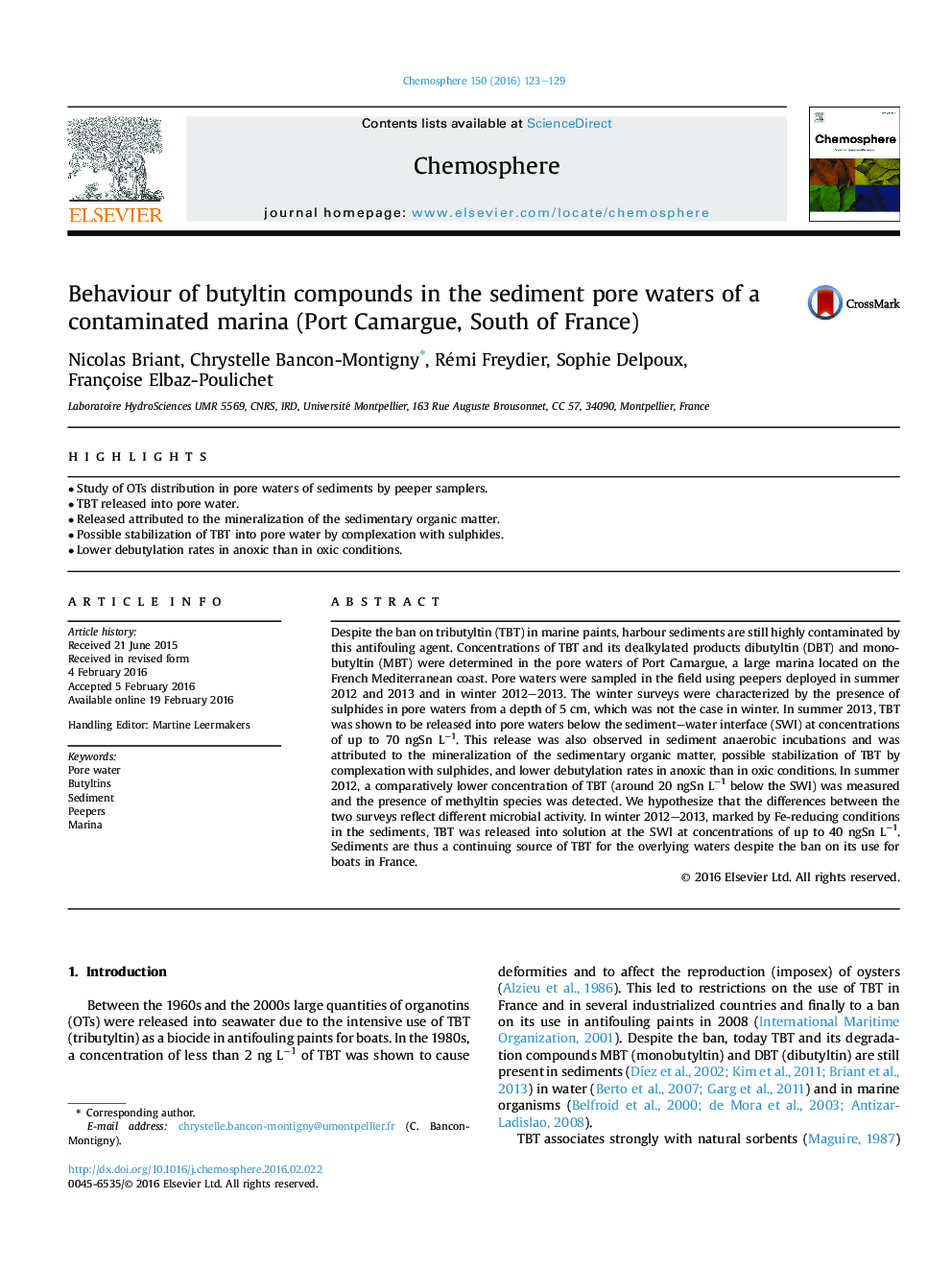| Article ID | Journal | Published Year | Pages | File Type |
|---|---|---|---|---|
| 6306762 | Chemosphere | 2016 | 7 Pages |
â¢Study of OTs distribution in pore waters of sediments by peeper samplers.â¢TBT released into pore water.â¢Released attributed to the mineralization of the sedimentary organic matter.â¢Possible stabilization of TBT into pore water by complexation with sulphides.â¢Lower debutylation rates in anoxic than in oxic conditions.
Despite the ban on tributyltin (TBT) in marine paints, harbour sediments are still highly contaminated by this antifouling agent. Concentrations of TBT and its dealkylated products dibutyltin (DBT) and monobutyltin (MBT) were determined in the pore waters of Port Camargue, a large marina located on the French Mediterranean coast. Pore waters were sampled in the field using peepers deployed in summer 2012 and 2013 and in winter 2012-2013. The winter surveys were characterized by the presence of sulphides in pore waters from a depth of 5 cm, which was not the case in winter. In summer 2013, TBT was shown to be released into pore waters below the sediment-water interface (SWI) at concentrations of up to 70 ngSn Lâ1. This release was also observed in sediment anaerobic incubations and was attributed to the mineralization of the sedimentary organic matter, possible stabilization of TBT by complexation with sulphides, and lower debutylation rates in anoxic than in oxic conditions. In summer 2012, a comparatively lower concentration of TBT (around 20 ngSn Lâ1 below the SWI) was measured and the presence of methyltin species was detected. We hypothesize that the differences between the two surveys reflect different microbial activity. In winter 2012-2013, marked by Fe-reducing conditions in the sediments, TBT was released into solution at the SWI at concentrations of up to 40 ngSn Lâ1. Sediments are thus a continuing source of TBT for the overlying waters despite the ban on its use for boats in France.
